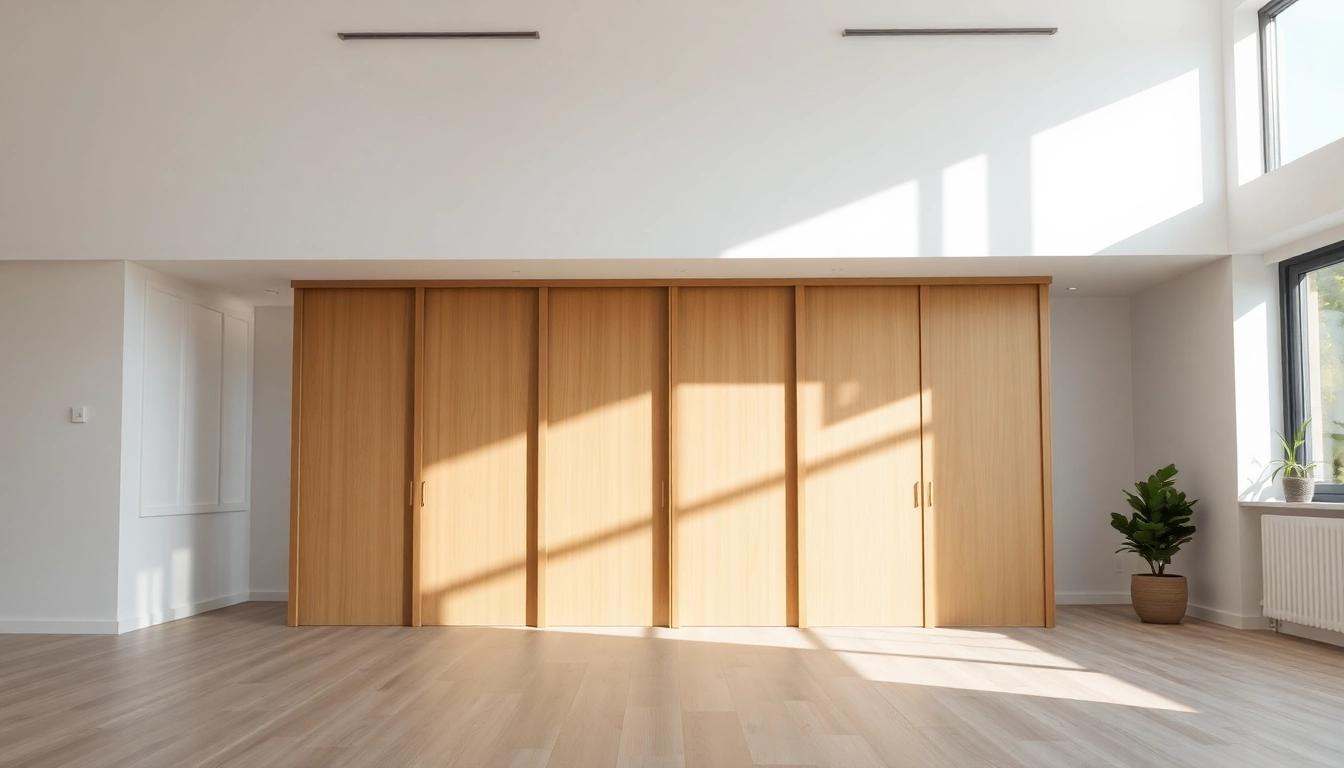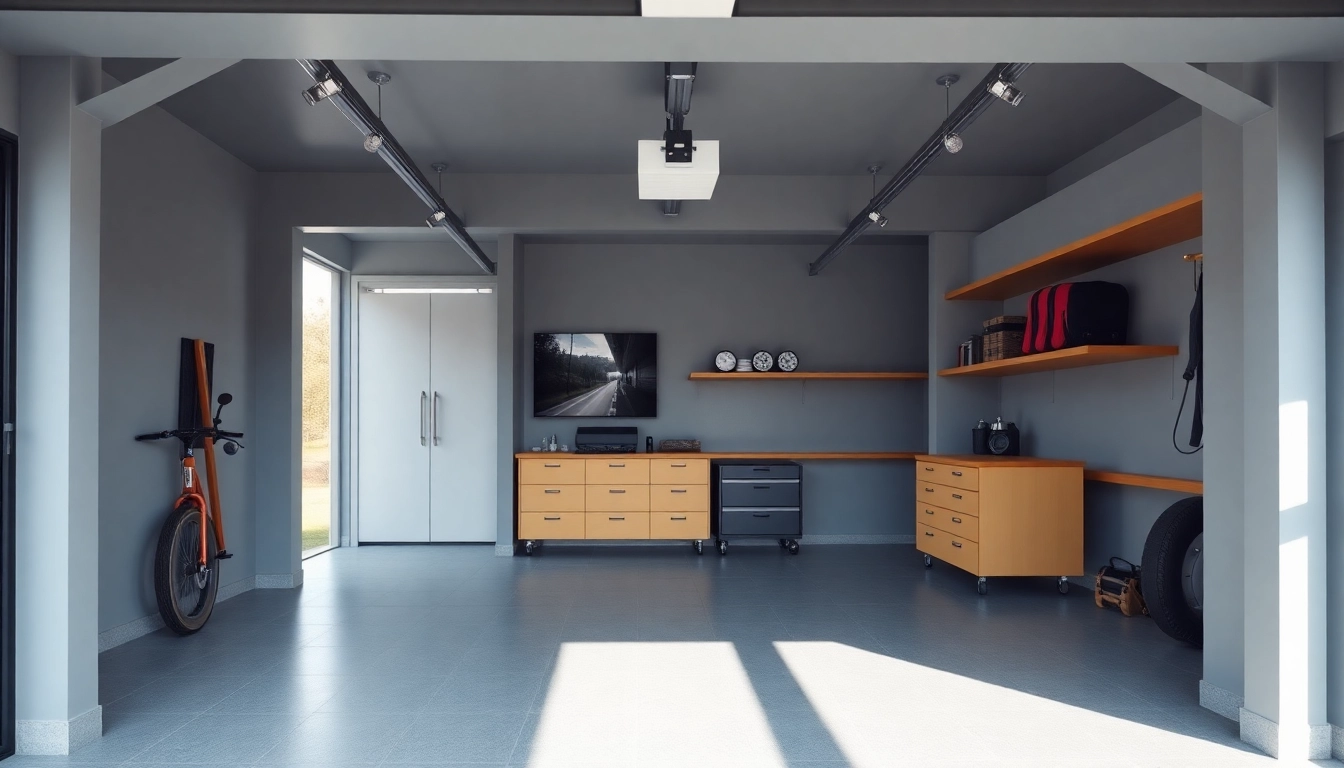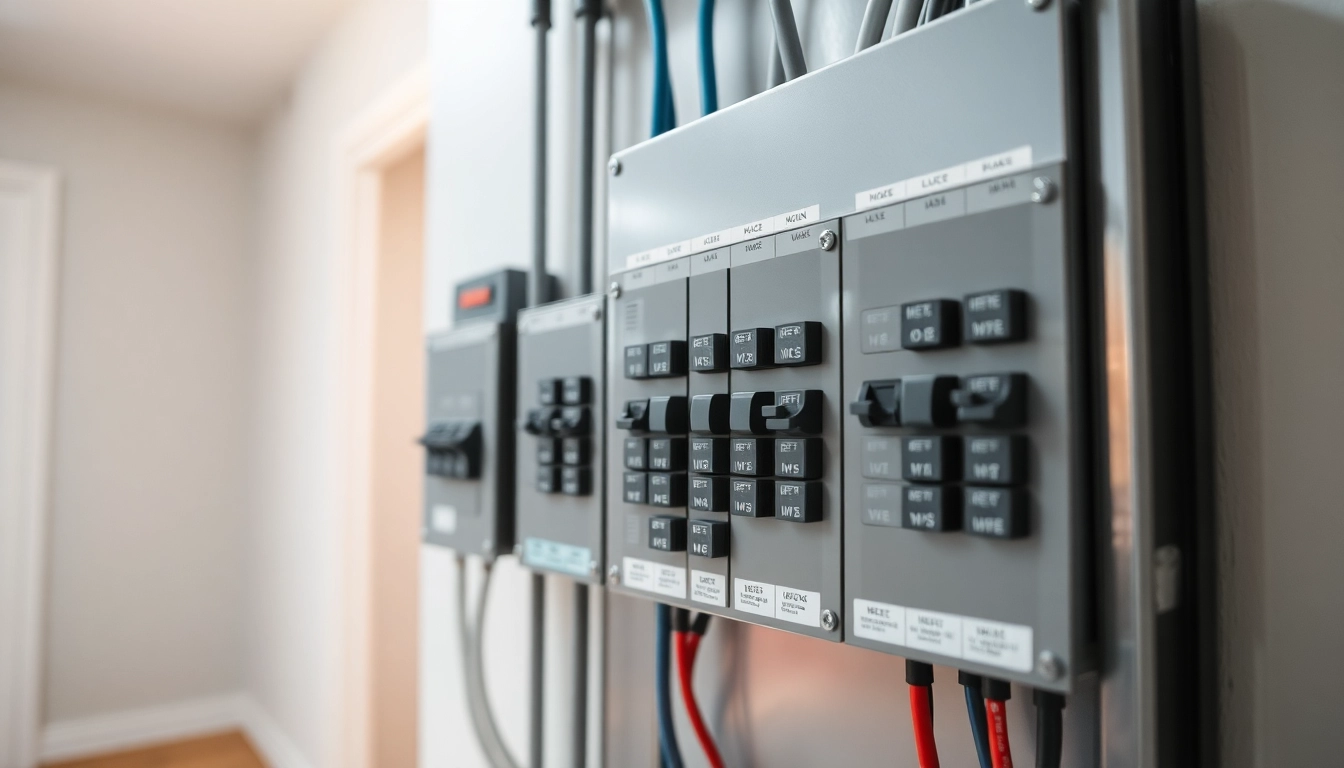Understanding Sliding Partition Walls
What is a Sliding Partition Wall?
A sliding partition wall is a versatile design feature used in both residential and commercial spaces to divide larger areas into smaller, more manageable sections. Unlike traditional walls, which are permanently fixed, sliding partition walls can be moved and adjusted according to the needs of the space. This allows for greater flexibility in how areas are utilized, making them ideal for multifunctional spaces. The mechanisms used often include tracks and rollers, which allow the wall panels to glide smoothly along a set path, providing easy access and reconfiguration at a moment’s notice.
Benefits of Using Sliding Partition Walls
Sliding partition walls offer a host of advantages over traditional barriers. Some of these benefits include:
- Space Optimization: Perfect for small spaces, sliding partition walls make it easy to configure rooms for various functions — from private offices to open meeting areas.
- Cost-Effective: Compared to traditional construction methods, sliding walls can often be less expensive and quicker to install, allowing for budget-friendly updates and renovations.
- Design Flexibility: Available in various materials and styles, they can serve as a design focal point, providing aesthetic appeal while fulfilling practical needs.
- Acoustic Control: Many sliding partition systems come with soundproofing options, enabling better privacy and reducing noise between separated spaces.
- Easy to Use: Users can quickly set up or take down the partitions, making them incredibly convenient for temporary configurations.
Types of Sliding Partition Walls Available
Sliding partition walls can be categorized into several types based on their function, materials, and mechanisms:
- Operable Walls: These walls usually involve a track system and can be folded or stacked at one end, allowing for various configurations.
- Panel Sliding Walls: Movable panels that can be slid open or closed to create or eliminate spaces without permanent construction.
- Glass Partition Walls: Offering a modern look while allowing natural light to flow through spaces, glass walls are commonly used in offices and upscale environments.
- Acoustic Partition Walls: Specialized walls designed to reduce sound transmission and enhance privacy, making them ideal for meeting rooms and studios.
Choosing the Right Sliding Partition Wall
Factors to Consider When Selecting
Selecting the appropriate sliding partition wall involves considering various factors to ensure it fits the specific needs of your space:
- Purpose: Identify how you intend to use the space. Will it require frequent reconfiguration? Understand the need for flexibility versus permanence.
- Space Constraints: Measure your available space carefully. Ensure that there is enough clearance for the wall to slide fully open and closed without obstruction.
- Design Aesthetic: Match the material and style of the sliding wall to the existing décor of your space for a cohesive look.
- Budget: Sliding partition walls come in a range of prices depending on the materials and features, so it’s essential to set a budget before shopping.
- Installation Requirements: Determine whether you will install the wall yourself or hire a professional. This can affect your choice significantly.
Exploring Materials and Designs
The materials and designs for sliding partition walls vary widely, influencing both functionality and visual appeal:
- Wood: Offers a classic, warm feel and is adaptable for both traditional and contemporary interiors.
- Metal: Provides a sleek, modern look, ideal for industrial-style spaces.
- Glass: Allows for visibility and light, making spaces feel larger while maintaining separation.
- Fabric: Soft partitions can be used for sound absorption and enhance comfort in spaces like studios or theaters.
Installation Options for Sliding Partition Walls
When it comes to installation, there are either permanent or temporary solutions available based on user needs:
- Track Systems: Fixed tracks installed in ceilings or floors allow panels to slide easily. This is common for more permanent installations.
- Wall-Mounted Setup: Hanging options allow panels to slide without floor tracks, offering a cleaner look and easier adjustments.
- Mobile Wall Options: Freestanding and on wheels can be ideal for temporary spaces or multifunctional areas.
Applications of Sliding Partition Walls
Residential Uses: Enhancing Home Interiors
In residential settings, sliding partition walls significantly enhance how space is utilized within the home. Here are some common applications:
- Open Concept Living: Create flexibility in large open living areas by allowing easy separation for dining or entertaining.
- Home Offices: Install sliding walls to create instant privacy during video calls or meetings while maintaining an open flow when needed.
- Bedroom Dividers: Use sliding walls to separate sleeping areas from nooks or workspaces, especially in smaller apartments.
Commercial Uses: Efficient Space Management
For commercial spaces, sliding partition walls serve to maximize functionality and efficiency:
- Conference Rooms: Create flexible meeting spaces that can adapt based on team sizes and needs without the need for extensive renovations.
- Retail Spaces: Utilize sliding walls to create distinct areas for different products or to partition off sections for events or promotions.
- Hospitality Venues: In restaurants and hotels, sliding walls can enhance guest privacy while allowing for larger groups during events and gatherings.
Creative Practices with Sliding Partition Walls
Sliding partition walls can lend themselves to innovative designs while catering to different themes or functionalities:
- Artistic Displays: Use the walls as canvases for artistic murals, graphics, or branding opportunities.
- Dynamic Environments: Implement lighting techniques or thematic materials that can be altered with the partition configurations to create diverse atmospheres.
- Multi-Functional Furniture: Pair sliding walls with modular furniture to evoke a flexible living experience, catering to spontaneous gatherings or quiet evenings at home.
Installation and Maintenance Tips
DIY Installation vs. Professional Help
When it comes to installation, knowing whether to engage professional services or to undertake a DIY project is crucial:
- DIY Installation: Basic sliding partition walls with straightforward track systems can often be reconfigured by a determined homeowner, especially with pre-made kits.
- Professional Installation: For complex systems or larger installations, hiring professionals can ensure optimal functionality and aesthetic appeal, avoiding potential pitfalls common in DIY setups.
Routine Maintenance for Longevity
To ensure the longevity and smooth operation of sliding partition walls, maintain them regularly:
- Clean Tracks and Panels: Dust and debris can impede the sliding function; regular cleaning helps maintain efficiency.
- Inspect Hardware: Periodic checks on the tracks, rollers, and any moving parts will help catch signs of wear that can be addressed before they develop into bigger issues.
- Lubricate Moving Parts: Using appropriate lubricants keeps sliding mechanisms functioning smoothly.
Common Issues and Troubleshooting
As with any fixture, sliding partition walls may encounter some common issues:
- Sticking Panels: If panels become difficult to slide, check for obstructions and ensure tracks are clean and lubricated.
- Alignment Problems: Misalignments can occur over time. Adjusting the brackets and ensuring proper installation can often resolve this issue.
- Noise Issues: If sliding walls make unpleasant noises, inspect for worn rollers or inadequate lubrication, and replace parts as necessary.
Maximizing Functionality with Sliding Partition Walls
Designing Flexible Spaces with Sliding Partitions
With the goal of optimizing space usage, sliding partitions can significantly transform how interiors are experienced:
- Create Zones: Use sliding partitions to define areas without closing them off completely. This allows interaction while controlling noise and privacy.
- Interactive Spaces: In public settings, utilizing partitions can give a dynamic quality to your layout, allowing spaces to shift according to the needs of users.
Innovative Solutions for Small Areas
For compact environments, sliding partition walls offer an ideal solution:
- Vertical Solutions: Ceiling to floor designs can help create a sense of openness while maintaining functionality through distinct areas.
- Lightweight Materials: Selecting lighter materials helps ease the installation process while giving quicker adaptability to space configurations.
Combining Privacy and Openness with Style
Sliding partition walls can successfully create balance between privacy and open accessibility:
- Retractable Options: Take advantage of retractable sliding walls that can be fully opened or closed, allowing for complete openness or seclusion as necessary.
- Decorative Features: Invest in stylish options, such as patterned glass or decorative wood finishes, that add an aesthetic element while performing the primary function of room division.



